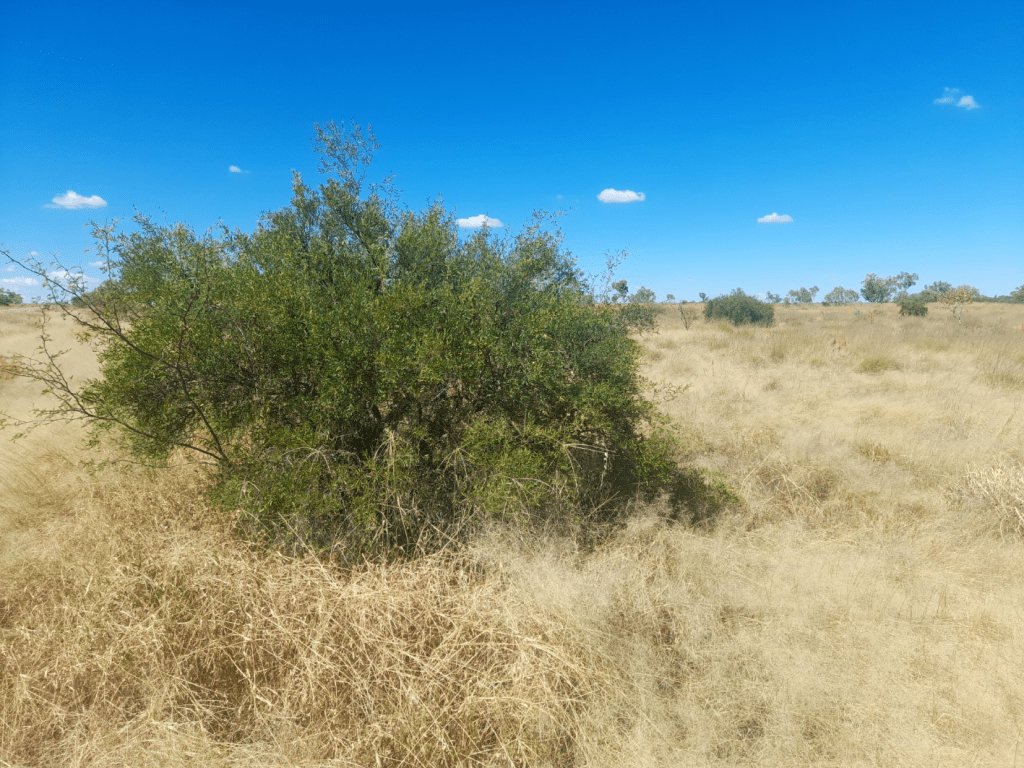The name “Wolfe Creek” might evoke chills for some, but for me, it sparks a different image: the vibrant conkerberry bush (Carissa lanceolata). Flourishing in the rich soils of northern Australia’s floodplains, this isn’t a monstrous creature, but a beautiful shrub with a surprising range of uses. Beyond Wolf Creek: Unveiling the Conkerberry’s Hidden Gems

A Haven for Wildlife and Culture
Indigenous communities hold the conkerberry in high regard. The Jaru people call it “burnungarna,” while the Walmajarri know it as “marnukuji.” This prickly haven provides vital shade and protection for agile and spectacled hare wallabies, a refuge similar to what their extinct cousin, the mala, once enjoyed.
Around Fitzroy Crossing, the Gooniyandi and Bunuba people call it “biriyali” and utilize the fragrant smoke from burnt conkerberry wood as a natural insect repellent, especially against seasonal mosquito invasions. In Broome, the smoke even holds a spiritual significance, used in ceremonies to bless young children.
From Practical Uses to Artistic Beauty
The conkerberry’s value extends beyond its ecological benefits. The wood itself, boasting stunning shades of orange and yellow, is a favorite among artisans for crafting unique art pieces and functional objects. Medicinally, some central desert communities use a root bark soak to treat skin and eye issues. Interestingly, other Carissa species in Africa are even used to create arrow poisons.
A Delightful Addition to Your Garden
The conkerberry is a fantastic choice for any garden. Its compact size and dense, prickly foliage make it ideal for hedging or shaping into topiary designs. This haven for small birds like wrens and finches is further enhanced by the fragrant flowers that attract beneficial insects, promoting a healthy garden ecosystem. And the best part? The delicious purple-black fruits are a sweet treat waiting to be discovered by adventurous youngsters (and adults too!).
Planting Your Own Conkerberry
While seeds are an option, root cuttings offer a more reliable way to cultivate your own conkerberry. Look for small branches that have naturally taken root beneath existing bushes. Using sharp secateurs, carefully remove these “volunteer” branches with a trowel or dibbler, minimizing disruption to the parent plant. Pot them up, water them well, and keep them moist during establishment, especially after transplanting. The wet season provides the ideal window for planting them outdoors.
So, the next time you hear “Wolfe Creek,” ditch the horror movie associations and embrace the beauty and practicality of the conkerberry bush. This hardy shrub is sure to become a delightful addition to your garden, offering a touch of wonder for you and your family.
The National Indigenous Cultural Centre (NICC) is an Indigenous home.
We provide Indigenous products, music, art and news.
If you want Indigenous gifts and merchandise, bush tucker food at your next event or Indigenous entertainment at your next party, expo or conference, feel free to contact us!
Visit our page: https://nicc.org.au/
Tony Clemenger.
Chief Executive Officer.
Tel: 0419431649.
Level 1 397 Chapel Street South Yarra 3141.
Source: https://nit.com.au/27-05-2024/11641/mangarri-man-marnukuji-conkerberry

